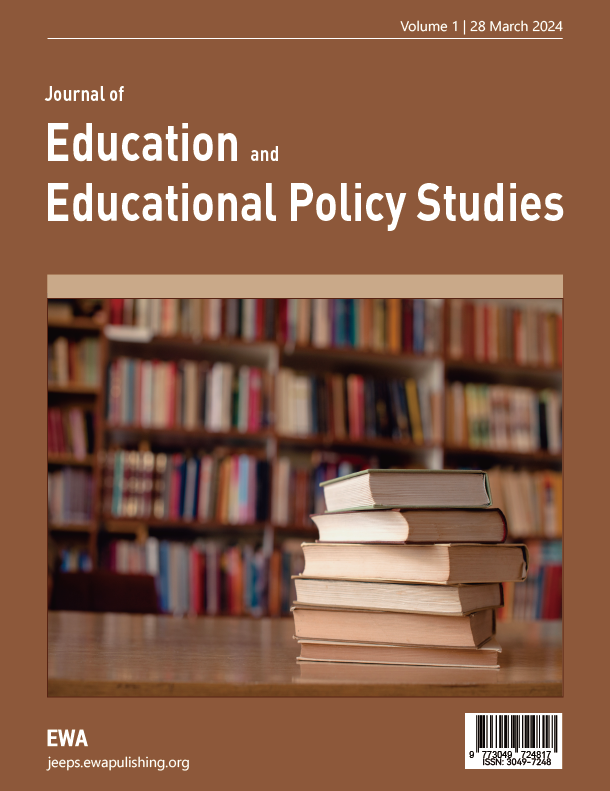References
[1]. Zhang, S. (2021). Exploring Trade-Off between Complexity, Accuracy and Fluency in IELTS Speaking. Curric. Teach. Methodol., 4 (5), pp. 23-29.
[2]. Sample, E., & Michel, M. (2014). An exploratory study into trade-off effects of complexity, accuracy, and fluency on young learners’ oral task repetition. TESL Canada Journal, 23-23.
[3]. Cendra, A. N., & Sulindra, E. (2022). SPEAKING ACCURACY, FLUENCY, AND BEYOND: INDONESIAN VOCATIONAL STUDENTS’VOICES. LLT Journal: A Journal on Language and Language Teaching, 25(2), 379-394.
[4]. Koizumi, R., & In'nami, Y. (2024). Predicting functional adequacy from complexity, accuracy, and fluency of second-language picture-prompted speaking. System, 120, 103208.
[5]. Miller, G.A. (1956). The magical number seven, plus or minus two: Some limits on our capacity for processing information. Psychol. Rev., 63 (2), p. 81.
[6]. Skehan, P. (1998). A Cognitive Approach to Language Learning. Oxford University Press.
[7]. Baddeley, A. (2003). Working memory and language: An overview. Journal of communication disorders, 36(3), 189-208.
[8]. Skehan, P. (1996). A framework for the implementation of task-based instruction. Appl. Linguist., 17 (1), pp. 38-62.
[9]. Ahmadian, M.J. (2012). The effects of guided careful online planning on complexity, accuracy and fluency in intermediate EFL learners’ oral production: The case of English articles. Lang. Teach. Res., 16 (1), pp. 129-149.
[10]. Yuan, F., & Ellis, R. (2003). The effects of pre‐task planning and on‐line planning on fluency, complexity and accuracy in L2 monologic oral production. Applied linguistics, 24(1), 1-27.
[11]. Housen, A., & Kuiken, F. (2009). Complexity, accuracy, and fluency in second language acquisition. Appl. Linguist., 30 (4), pp. 461-473.
[12]. Tsang, A. (2025). The relationships between EFL learners’ anxiety in oral presentations, self-perceived pronunciation, and speaking proficiency. Language Teaching Research, 29(4), 1639-1659.
[13]. Bygate, M. (2016). Sources, developments and directions of task-based language teaching. Lang. Learn. J., 44 (4), pp. 381-400.
[14]. Yamaoka, K. (2013). Exploring the Trade-off Relationship Between Fluency and Accuracy Identifying the Key Factor that Determines this Relationship. LET Kansai Chapter Collected Papers, 14, 41-61.
[15]. Chehr Azad, M.H., Farrokhi, F., & Zohrabi, M. (2018). Corrective Feedback, Spoken Accuracy and Fluency, and the Trade-Off Hypothesis. Int. J. Instr., 11 (2), pp. 465-482.
[16]. Zondag, A. (2024). Student teachers’ experience with improvisation activities for spontaneous speech practice in English. Language Teaching Research, 28(6), 2190-2213.
[17]. Asratie, M. G., Wale, B. D., & Aylet, Y. T. (2023). Effects of using educational technology tools to enhance EFL students’ speaking performance. Education and Information Technologies, 28(8), 10031-10051.
[18]. KIZIL, A. Ş. (2024). Linguistic Dimensions of L2 Performance: Complexity, Accuracy and Fluency. Gaziantep University Journal of Social Sciences, 23(4).
[19]. Skehan, P. (2024). Linking second language speaking task performance and language testing. Language Teaching, 57(4), 501-516.
[20]. Mora, J. C., Mora‐Plaza, I., & Bermejo Miranda, G. (2024). Speaking anxiety and task complexity effects on second language speech. International Journal of Applied Linguistics, 34(1), 292-315.
[21]. Xu, T. S., & Zhang, L. J. (2023). Effects of cognitive task complexity and online planning on second language learners’ argumentative writing. Frontiers in Psychology, 14, 1121994.
[22]. Jin, S. (2024). Speaking proficiency and affective effects in EFL: Vlogging as a social media‐integrated activity. British Journal of Educational Technology, 55(2), 586-604.



